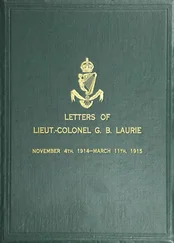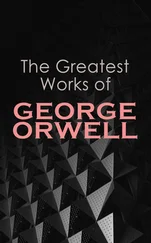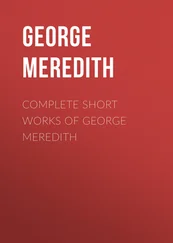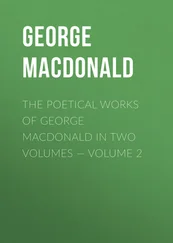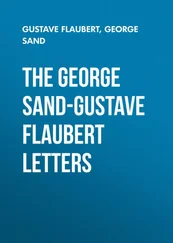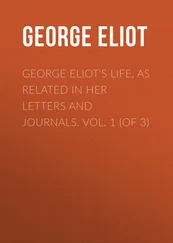There is a little of everything in this volume, which acts as a kind of mailbox into which messages have been deposited, year after year, over the course of half a century. Alongside the short, instrumental letters, treatise-like letters are also found containing cogent, concentrated arguments reminiscent of the developments found in the thinker’s major works. Read as a whole, they eloquently express his material and vital concerns, intertwined with other speculations and dilemmas that range from his early estrangement at being at Harvard to his long-cherished desire to leave the university in order to practice philosophy as a way of life rather than being a philosophy professor; they also encompass reflections on love and death, contacts with publishers —including their rejection or acceptance to publish his works, the constant planning of his travels and sojourns, digressions on Homeric times, notes on the perception of life as a dream, and asides on his own writing process…
While reading these texts one is easily transported to the thinker’s silent space as he reads or takes notes in the solitude of his study, and when the writer describes the urban landscape of the big cities, the noise and increasing bustle of the streets can almost be perceived. As we read these texts, of admirable plasticity and visual power, we experience a passage through different atmospheres, some denser and some lighter, where the aroma of the classical pervades contemporary experiences and moments, as when he visits the grape harvest in Avila and associates it with the lifestyle of The Georgics . The letters also seem to give us access to a world full of evocations and adventures —adventures pertaining to the realms of intelligence and reason— through the primacy of names that reverberate and stimulate our imagination: those of legendary ships (“I sail in the ‘Lusitania’”, “I sail… in the ‘Kaiser Wilhelm II’”, “my passage is taken in the ‘Kaiserin Auguste Victoria’”), those of always temporary residences (Colonial Club, King’s College, Hotel Manin, Hotel du Quai Voltaire, Grove Street…), the almost fictional titles of philosophical societies, or those toponyms so expressive of far away places and distant countries which paradoxically make us feel the world as a domestic space.
And among the names, as Daniel Pinkas points out, those referring to paintings and books stand out. And to painting and reading are added other diverse expressions of art of which Santayana gives a good account by recreating for his friends his frequent visits to museums, and to the theatre and the opera, or to musical concerts and telling them about cultural tours as well as about his walks and observations on architecture (about which he intends to write a book —“if it is ever written”— as mentioned in his correspondence to Westenholz in 1905), one of the professions he would have cultivated had he been endowed, like Pessoa, with heteronyms.
As a polyhedral artefact, this volume of letters also invites different approaches and other reading angles. On the one hand, it lends itself to be read as the catalogue of an imaginary museum, similar to the one conceived by André Malraux, filled with impressionistic notes. In this sense, these pages could very well give rise to another parallel or complementary volume illustrated with each of the works of art mentioned, which would undoubtedly craft a beautiful diptych. On the other hand, this correspondence, which totals 90 letters from 1886 to 1937, could also be considered an extension or appendix to his autobiography Persons and Places , or a collection of notes complementary to the Little Essays . When regarded as variations on a series, even if the contents of these letters are familiar to us because they refer to many of his works, they always offer, in their meditated spontaneity, that which is proper to philosophy: the invaluable opportunity to rethink reality and thus reassess our contract with it throughout our fragile and ephemeral existence.
Pictures and books, persons and places, landscapes and passages. So many comings and goings, so many departures and arrivals, crossing countries on trains and continents on ships, staying in hotels and university residences, stopping off at memorable cafés, giving lectures here and there, reading and writing incessantly. “I have written so many letters”, he told Loeser in 1887, when his epistolary activity was still very recent, “that I never know what I have told one man and what another”… This handful of letters, which adds to the rest of his abundant correspondence, is the material proof that writing, for Santayana, in any of its registers, is one more way —everyday, immediate, full of genial impromptus —, of practicing philosophy. And the philosopher practiced it not only in solitude but also as a genuine expression of intellectual friendship. The best definition of philosophy for Santayana is that which identifies it with the life of reason, a life that can be shared and enriched through the joy of dialogue and conversation. These newly discovered letters are a sensitive, lucid and delightful proof of that conversation. We have now the unique opportunity to join in, thus enriching ourselves as readers, sharing the common purpose of reaching the best version of ourselves, our most human dimension. Somehow, by participating ourselves in the experience offered by these pages, guided by Santayana’s hand, we will somehow be able to use his own words at the end of these letters and make them our own: “I saw things I shall never forget”. And in passing, we will have come to know the author of these letters a little better for, as William James stated in A Pluralistic Universe , “a man’s vision is the great fact about him.”
The original letters are available on the website of the Santayana Edition, section Texts, thanks to the praiseworthy management of its director, Martin A. Coleman. We feel indebted to Megan Young Schlee for the transcription of the letters to Charles A. Loeser, and to Matthew N. Preston II for the transcription of the letters to Albert W. von Westenholz, and we are equally grateful to Martin Coleman for his very fine supervision. The translation and critical editing of this book are due to Daniel Moreno, who has carried out the kind of meticulous and rigorous work we are familiar with. Both Daniel Pinkas and Daniel Moreno shared the wish to publish this volume in the University of Valencia collection Biblioteca Javier Coy d’Estudis Nord-Americans , which includes previous books on George Santayana. This edition would not have been possible without their determination and commitment, nor would it have been possible without the enthusiastic involvement and generous support of Professor Carme Manuel, the director of this unique North American Studies series. We would like to thank them all for having crafted this new volume and for making it accessible in English and in Spanish so that it could reach a wider readership on the two shores of the Atlantic, and beyond.
José Beltrán Llavador 1
Qué estimulante resulta adentrarse en esta correspondencia que mantiene George Santayana con dos de sus numerosos amigos durante cinco largas décadas que atraviesan el siglo XIX y el siglo XX Las cartas recién descubiertas constituyen una colección pequeña comparada con la totalidad de su actividad epistolar, que ocupa nada más y nada menos que ocho libros (el volumen 5) dentro de las obras de George Santayana que viene publicando el MIT con gran cuidado académico. Precisamente por ello, este nuevo legado cobra el valor añadido de lo inesperado, de lo insólito y de lo inédito. ¿Quién hubiera pensando que todavía iba a ser posible encontrar nuevos materiales con los que enriquecer un corpus tan extenso?
Читать дальше

